
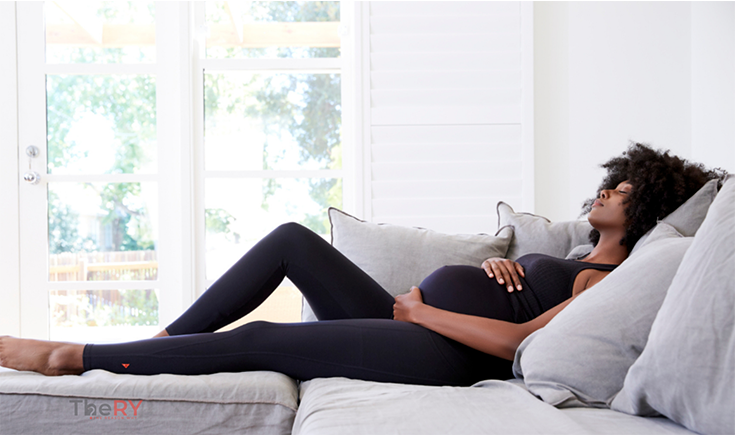
Before you became pregnant, you probably didn’t know much about compression garments, except for them as something some people wear on plane rides to reduce fluid retention and prevent deep vein thrombosis (DVT).
But, did you know that compression garments can help in a variety of ways both during and after pregnancy? From improving the health and wellbeing of mother and baby, and preventing and reducing the severity of issues associated with pregnancy, to assisting with recovery postpartum.
Read on to learn about the various types of compression garments, and how they can significantly benefit women during and after pregnancy.
During Pregnancy
During pregnancy, the body works harder than most women realise. It creates up to 50% more blood and the heart is working up to 30% harder than usual to push blood around the body and to the growing foetus.
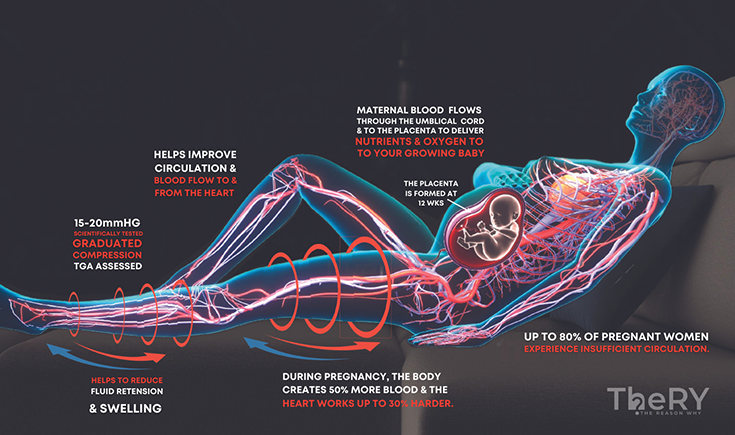
How do compression garments help during pregnancy?
During pregnancy, the body works harder than most women realise. It creates up to 50% more blood and the heart is working up to 30% harder than usual to push blood around the body and to the growing foetus.
For circulation issues
Up to 80% of pregnant women will have circulation issues during pregnancy. Thankfully, there are compression garments to help with this.
Graduated compression² leggings and socks can help improve blood flow.
However, only scientifically tested and graduated compression garments that are listed with the Therapeutic Goods Association (TGA), can provide circulation benefits to help the following symptoms:
- Help improve maternal blood flow to the placenta to provide nourishment to the baby in utero. Adequate blood flow is vital to the baby’s health and development.
- Help reduce fluid retention, and relieve tired swollen legs, feet and even those dreaded cankles. About 65% of pregnant women suffer from ankle, leg & feet swelling, which can be increased even more during summer.
- Help reduce fatigue and aches to allow you to get on with your day. Graduated compression has also been found to help reduce symptoms of morning sickness³
- Help prevent and reduce the severity of spider and varicose veins. Approximately 40% of women develop varicose veins and women who have been pregnant before are at higher risk of developing them.
- Help reduce the risk of dvt and blood clots from long periods of standing or sitting – whether you are at a job where you are on your feet all day, travelling on holidays or a babymoon, doctor’s orders for bedrest or planning to not move from the couch and binge the latest series over the weekend.
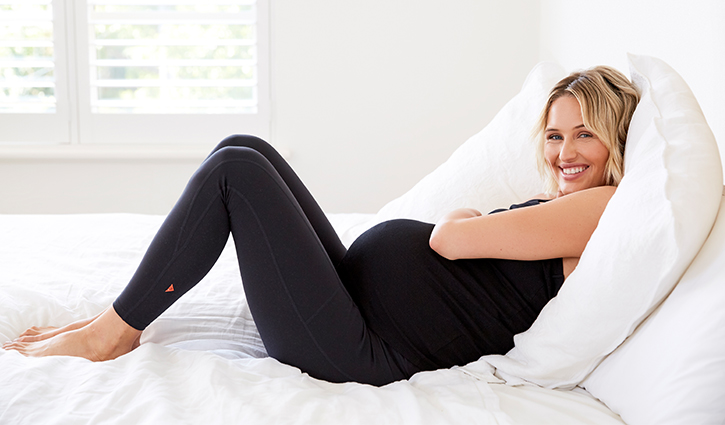
Poor circulation and deficient blood flow has important health outcomes for both mother and baby and should not be ignored. If there is only one legging to wear during pregnancy it should be a graduated compression maternity legging.
For carpal tunnel syndrome
Another area compression garments can help during pregnancy is with sore swollen hands and weakness. About 35% of women experience carpal tunnel syndrome at later stages of pregnancy and can continue after birth.
Compression wrist sleeves can help deliver targeted compression to stabilise and provide support to help:
- Tingling, burning feeling, and numbness or pain in fingers and wrists
- Reduce fluid build-up to relieve swelling in hands.
How do compression garments help after pregnancy?
Our bodies go through enormous change throughout pregnancy so it is no surprise it can take some time to recover. As the body heals, graduated compression as well as targeted compression can help in several ways:
1. Graduated compression garments can help improve circulation
- Venous insufficiency from pregnancy does not go away after pregnancy. The risk of blood clots in your legs is increased 3-5x during pregnancy and in the first 6 weeks after birth. The risk is further increased if you have had a caesarean section.
- Following birth, whether it’s whilst in hospital, more time spent sitting, feeding, and resting, this may further contribute to swelling in legs. Graduated compression can help improve blood flow reduce swelling.
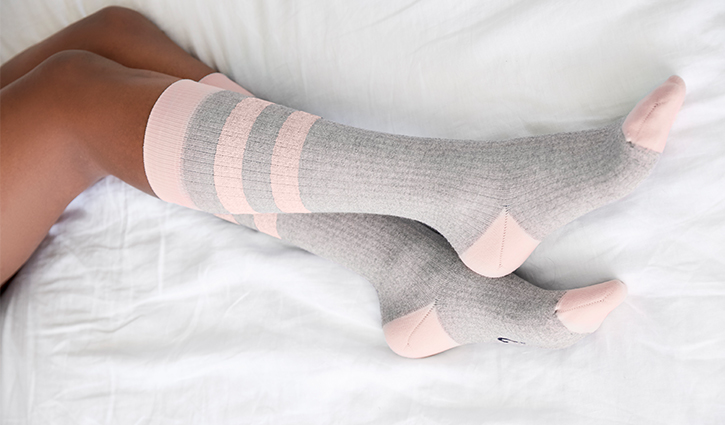
2. Targeted compression for abdominal separation and recovery
After birth, our bodies are less likely to snap back after birth, and many new mothers will be left with an extra mummy tummy or belly bulge which is very normal and expected. About 60% of women will have problems with abdominal separation (diastasis recti) following birth. During pregnancy the stomach muscles can weaken and separate as the belly grows. Some will recover within 6 weeks, 45% within 6 months, and about 30% may still have issues 12 months after birth.
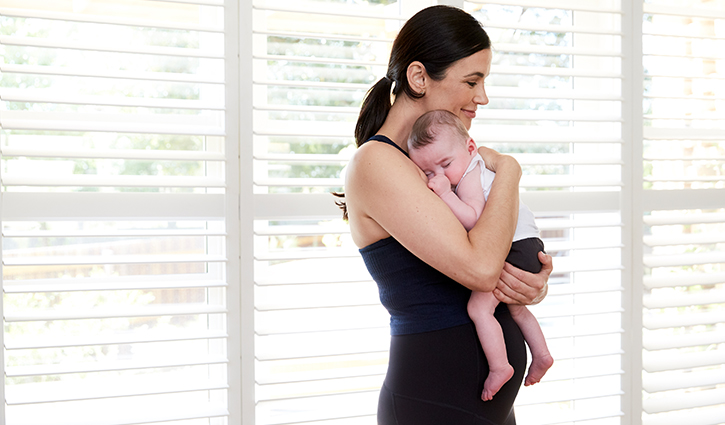
3. Following a C-Section
About 30% of babies are delivered by C-Section. Recovery can be 4-6 weeks after surgery, but 60% of women can still experience pain some 24 hours later. Following C-section surgery, the abdominal muscles are even further weakened and in need of support as wounds recover. Compression leggings with abdominal compression can provide the added support when it is harder to move and bend.
Postnatal leggings have compression abdominal panels to help support your muscles as they move back into place.
4. Support for Mother’s Wrist
Post pregnancy, up to 50% of women experience thumb and wrist pain (de quervain’s tenosynovitis) or mother’s wrist. Activities from caring for your baby can result in a sudden increase in load on the thumb and wrist which can result in swelling and weakness.
Compression wrist sleeves can help provide targeted support to provide relief to allow you to get on with day-to-day activities and continue caring for your baby.

Compression garments can help women throughout their pregnancy and well after birth. It is however, important to make sure that the products come from a reputable brand that is TGA assessed and listed so there is the correct pressure and not causing any harm. There are brands that claim compression with no real science behind them. Not all compression is created equal.























